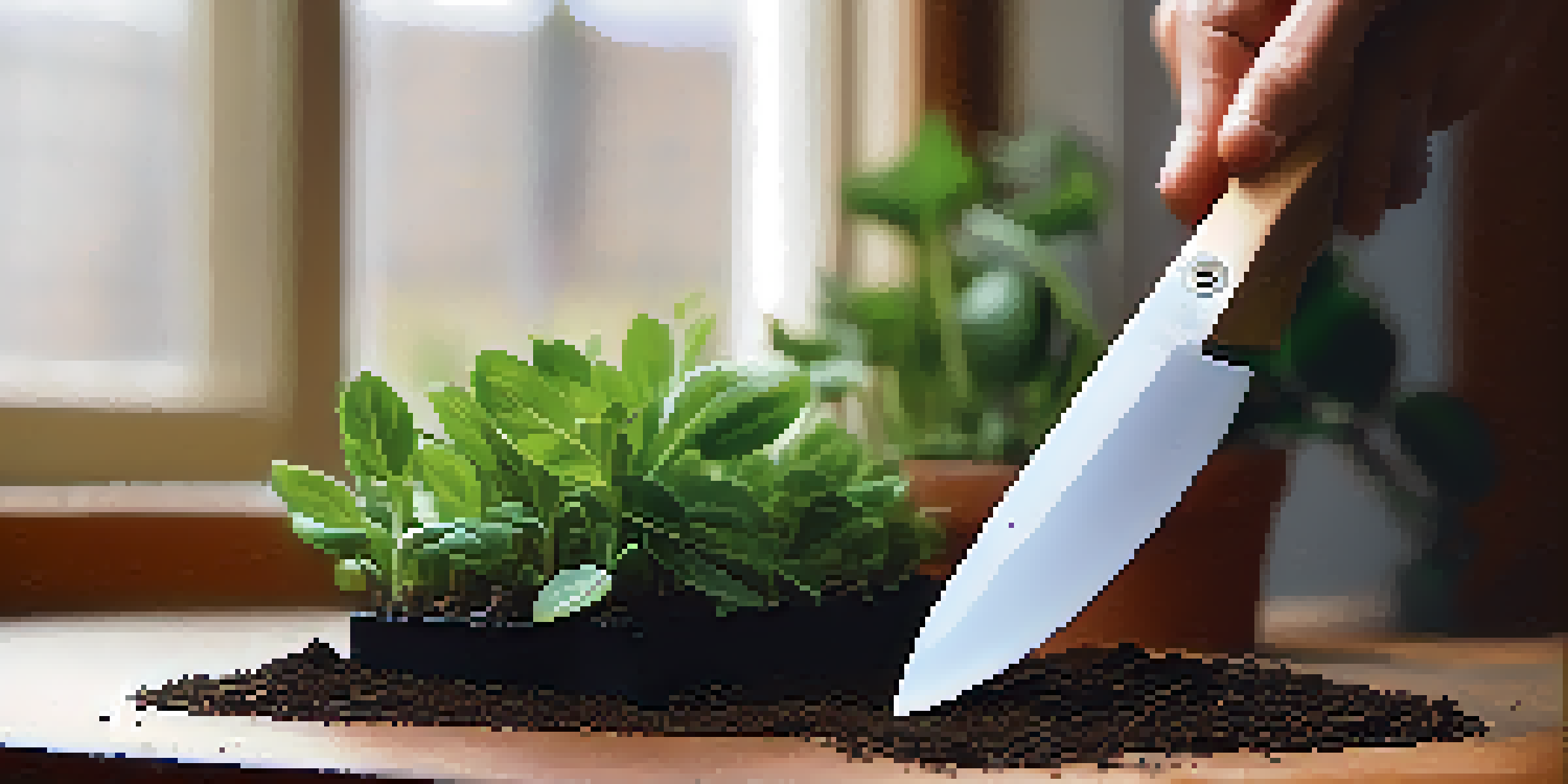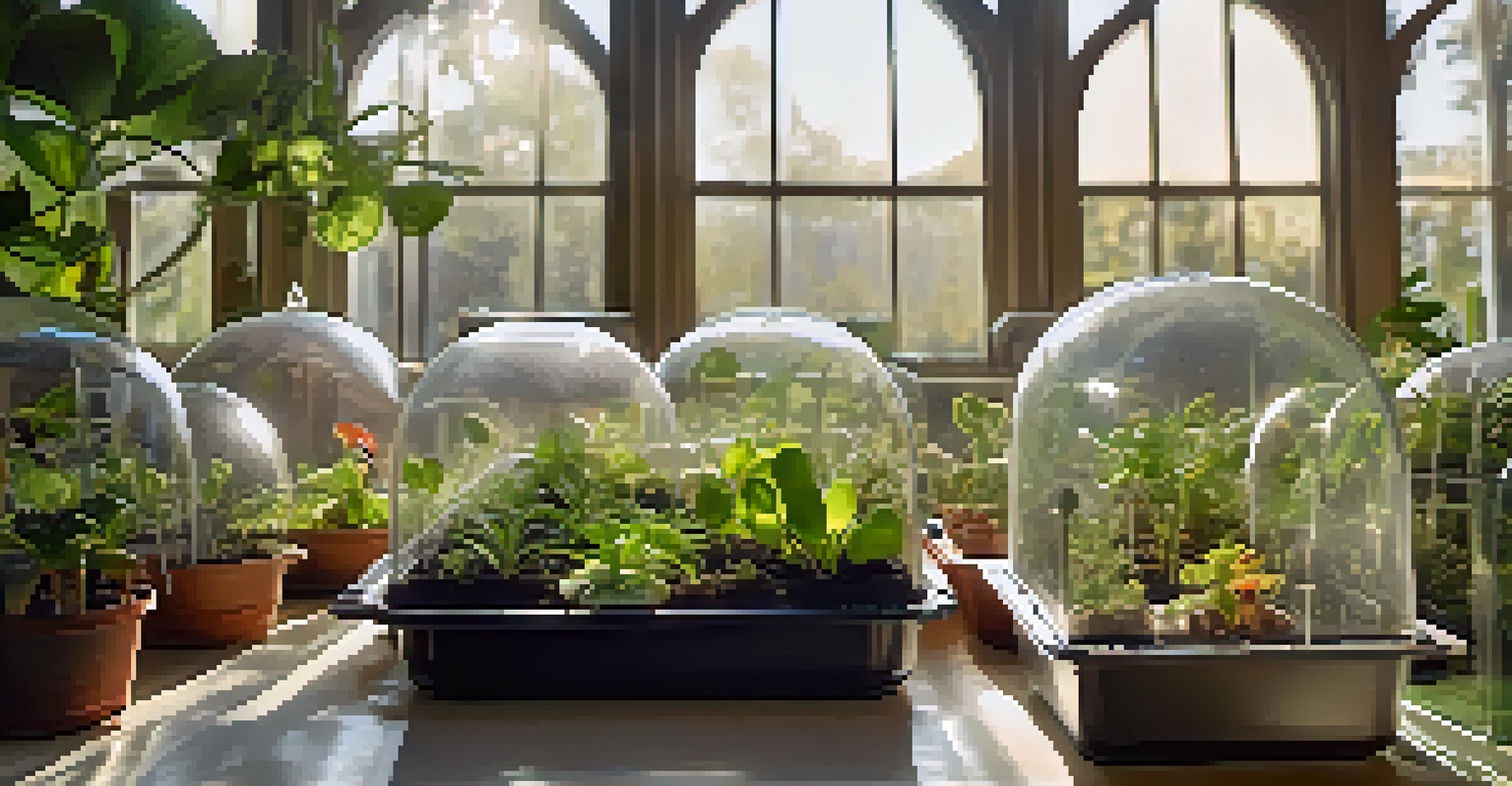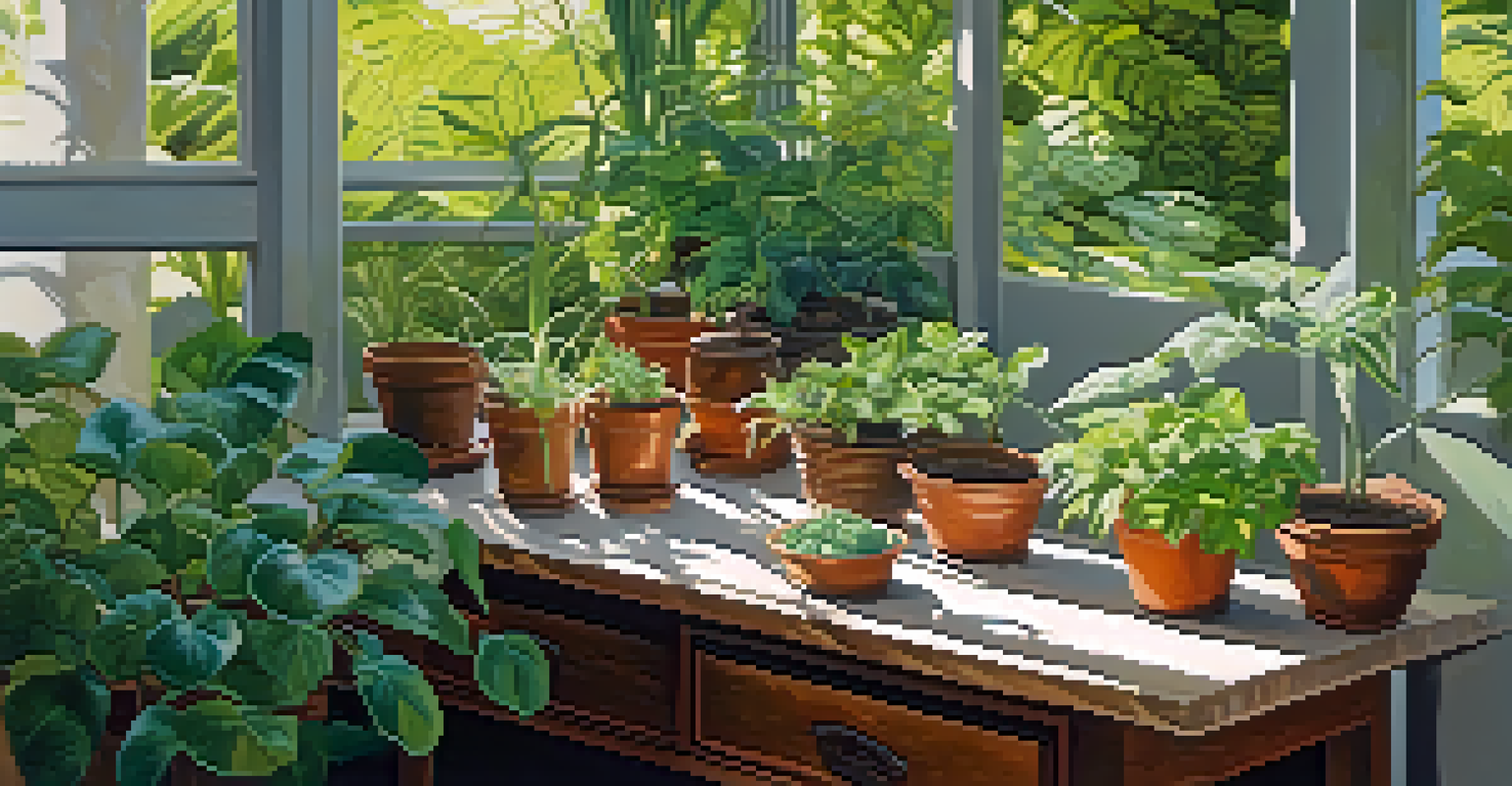Cutting Propagation: Timing and Best Practices Explained

Understanding Cutting Propagation and Its Benefits
Cutting propagation is a popular method for growing new plants from existing ones. It involves taking a part of a plant, usually a stem or leaf, and encouraging it to develop roots. This technique not only allows gardeners to expand their plant collection but also preserves the characteristics of the parent plant.
To plant a garden is to believe in tomorrow.
One of the key benefits of cutting propagation is that it is often quicker and more cost-effective than growing plants from seeds. Additionally, it allows you to replicate plants with desirable traits, such as vibrant flowers or unique foliage. This method can be particularly satisfying for plant enthusiasts looking to share their favorites with friends and family.
Moreover, cutting propagation can be a sustainable practice. By making new plants from existing ones, you reduce the need to purchase new plants from nurseries, which can have a significant environmental impact. Overall, understanding this method opens up a world of gardening possibilities.
The Best Time of Year for Taking Cuttings
Timing is crucial when it comes to cutting propagation. Typically, the best time to take cuttings is during the spring or early summer when plants are actively growing. At this time, the plant's energy is focused on new growth, making it easier for cuttings to develop roots.

In contrast, taking cuttings in the fall or winter can be less effective since many plants enter a dormant phase. During dormancy, they conserve energy, which can hinder the rooting process. Therefore, it's important to observe the specific growth patterns of your plants to maximize your chances of success.
Cutting Propagation Basics
Cutting propagation is an efficient way to grow new plants by taking parts of existing ones and encouraging root development.
Additionally, some plants may have unique requirements. For instance, softwood cuttings from shrubs like hydrangeas thrive in spring, while hardwood cuttings from trees like willows are best taken in late fall. Doing a bit of research on your specific plants can make all the difference.
Selecting the Right Cuttings for Propagation
Choosing the right part of the plant for your cuttings is essential for successful propagation. Ideally, you want to select healthy stems that are free from disease or damage. Look for sections that are young and flexible; these are often the most successful when it comes to rooting.
Gardening is a way of showing that you believe in tomorrow.
It's also beneficial to take cuttings from the tips of stems, as they tend to have a higher concentration of growth hormones. Avoid taking cuttings that are woody or too mature, as these may struggle to root. Remember, the quality of your cuttings directly impacts your overall success.
Consider using a clean, sharp knife or scissors to take your cuttings, ensuring that you make a clean cut. This prevents any crushing or damage to the plant tissue, which can inhibit root development. Taking the time to select the right cuttings is a vital step in the propagation process.
Preparing Your Cuttings for Rooting
Once you've selected your cuttings, the next step is to prepare them for rooting. Start by removing any lower leaves from the cutting, leaving just a few at the top. This helps the cutting focus its energy on root development rather than maintaining unnecessary foliage.
In some cases, you might want to dip the cut end of the cutting in rooting hormone. This natural or synthetic powder encourages faster root growth, significantly improving your chances of success. However, many plants can root without this step, so it's essential to know your specific plant's needs.
Ideal Timing for Cuttings
Spring and early summer are the best times to take cuttings, as plants are actively growing and more likely to root successfully.
Finally, make sure to keep your cuttings hydrated during the preparation process. Placing them in a glass of water or wrapping them in a damp cloth can help prevent them from wilting. Proper preparation sets the stage for a successful rooting experience.
Choosing the Right Medium for Rooting Cuttings
The rooting medium you choose can greatly affect the success of your cuttings. Options like potting soil, perlite, or a mix of both can provide a suitable environment for roots to develop. The key is to ensure that the medium drains well while retaining enough moisture.
For many gardeners, using a soilless mix is a popular choice. These mixes typically contain components like peat moss or coconut coir, which provide excellent drainage and aeration. This allows the cuttings to establish roots without the risk of waterlogging, which can lead to rot.
Additionally, consider using a propagation tray or small pots to give your cuttings individual space. This setup allows you to monitor each cutting's progress and makes it easier to manage moisture levels. Selecting the right medium and container plays a crucial role in successful propagation.
Creating the Ideal Environment for Your Cuttings
Creating the right environment for your cuttings is essential for encouraging root growth. Ideally, you'll want to keep them in a warm, humid location with indirect sunlight. A temperature range of 65-75°F (18-24°C) is often ideal for most cuttings.
To maintain humidity, consider covering your cuttings with a plastic bag or placing them under a clear plastic dome. This traps moisture and creates a mini-greenhouse effect, which helps prevent the cuttings from drying out. Just remember to ventilate occasionally to avoid mold growth.
Creating a Nurturing Environment
Providing a warm, humid environment with indirect sunlight is crucial for encouraging root growth in your cuttings.
Regularly check on your cuttings, ensuring the medium stays damp but not soggy. Overwatering can lead to rot, while under-watering can cause the cuttings to wilt. Finding the right balance is key to nurturing your new plants.
Monitoring and Caring for Your Cuttings
As your cuttings begin to root, it's important to monitor their progress closely. You'll typically notice new growth appearing within a few weeks, indicating that roots are developing. At this stage, patience is essential—some cuttings may take longer to root than others.
Continue to provide the right conditions, adjusting humidity and light as needed. If you notice any signs of yellowing leaves or mold, it may be time to reassess your environment. Addressing these issues promptly can save your cuttings from potential failure.

Once your cuttings have established a healthy root system, they can be gradually acclimated to outdoor conditions if you plan to transplant them. This process, known as hardening off, helps them adjust to their new environment. With proper care and attention, your cuttings will soon flourish into healthy plants.